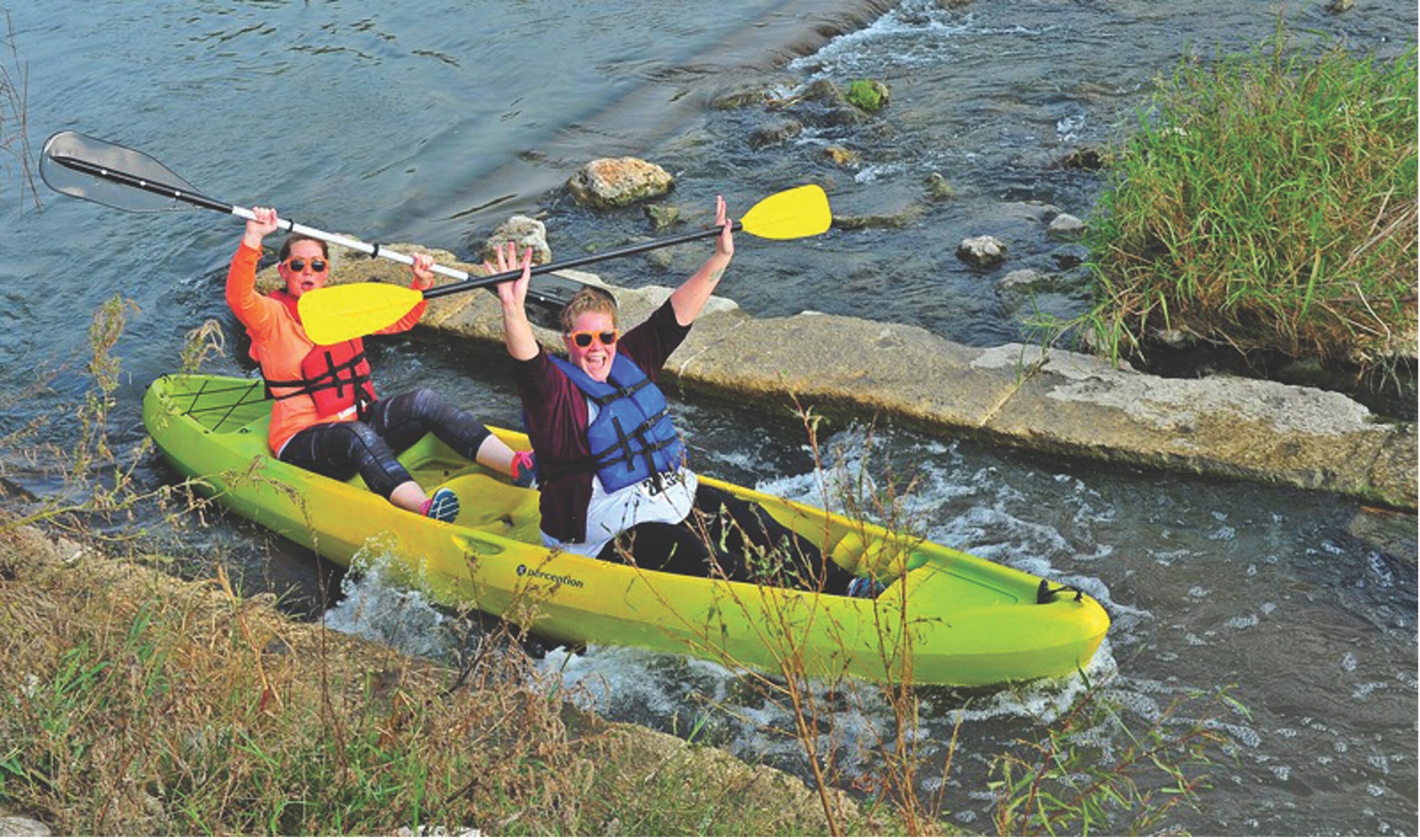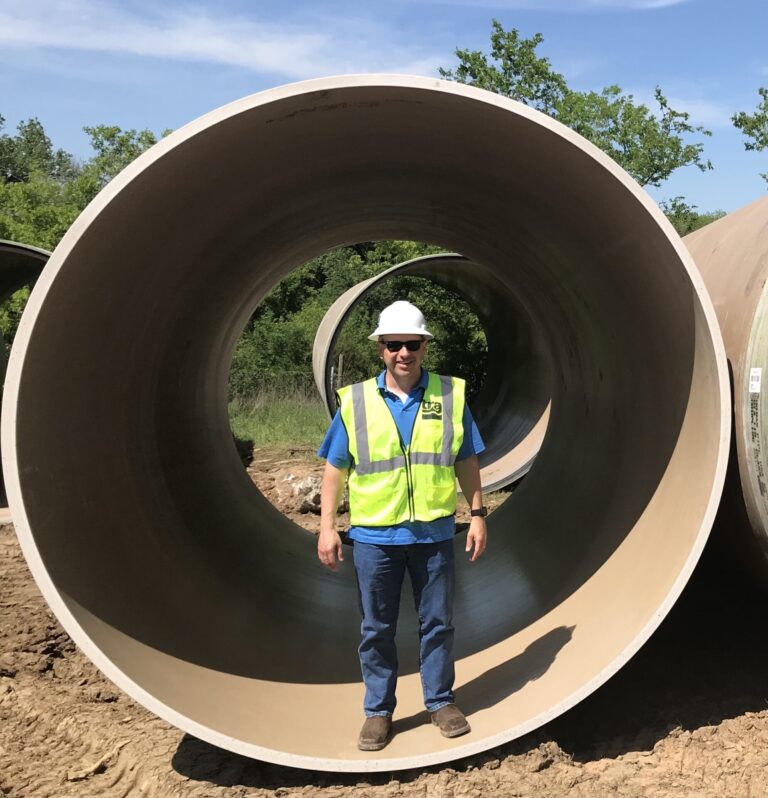Welcome to the San Antonio River Authority’s (River Authority) Basin Report Card series!
The San Antonio River Basin Report Card is an annual assessment of twelve indicators that shine a light on the healthy aspects of the San Antonio River Basin and those that may need improvement. Each month we will highlight a specific indicator and its grade for the 2021 Report Card. Follow along to read how you can help improve the health of area creeks and rivers.
This month, we discuss a metric concerning our river’s clean and enjoyable aspects. It also helps answer the question, “Is the San Antonio River water clean enough to swim in?” Read below as we explore the Swimming Standard of the San Antonio River Basin. Water you waiting for?
How is the Swimming Standard assessed?
The River Authority has an extensive water quality monitoring program that compiles and reports data on various pollutants throughout the basin. A high level of Escherichia coli (E. coli) in the river indicates fecal contamination that poses hazards to human health when water is ingested. It is no surprise then that E. coli is the key pollutant for assessing the grade for the Swimming Standard.
E. coli bacteria typically live in the intestines of people, birds, and mammals. However, suppose sources of E. coli, like canine feces, are left on sidewalks, streets, or on the ground in a local park. When a rain event occurs, the feces and the E. coli can be transported by stormwater runoff into nearby creeks and rivers in amounts that far exceed the safe swimming limit.
Scientists at the River Authority collect data on the amount of E. coli in the San Antonio River throughout the watershed. The data is then compared with standards set by the Texas Commission on Environmental Quality (TCEQ). For the Swimming Standard grade used in the San Antonio River Basin Report Card, we look at the TCEQ’s primary contact recreation standard. This is the standard for activities like wading and swimming, which often involve a significant risk of water ingestion.
See the Swimming Standard grade in the Basin Report Card for more information on how we calculated this rating for 2021.
Stormwater runoff (or non-point source pollution) is the most significant threat to water quality degradation in the San Antonio River Basin. It is also the most difficult to manage.
What is the Swimming Standard rating for 2021?
The rating for the 2021 Report Card is a D+.
This low rating is because only 28 out of 76 sites met the TCEQ’s standard for swimming and wading. The Bacteria Dashboard shows the locations of current monitoring stations along with their associated E. coli measurements. The data and corresponding basin report card grade indicate that E. coli bacteria levels monitored in the San Antonio River do not often meet the State’s Primary Contact Recreation Standard. A deeper dive into the data shows that the sites with the most difficulty meeting water quality standards are located within urbanized Bexar County. As expected, the water quality monitoring sites in urban areas have higher bacteria readings. As more natural surfaces are paved and developed, less water soaks into the ground. Instead, more water goes over these surfaces and into storm drains, picking up pollutants, including animal feces, and carrying them to creeks and rivers. While urban pollution is a problem, it is also true that some areas of the more rural southern basin are not meeting the standard.
So, can I swim in the San Antonio River?
Presently, swimming or wading in the San Antonio River in Bexar County is prohibited by a City of San Antonio (COSA) ordinance. There is some hope that this might change in the future. The River Authority is working with COSA officials and employees to determine the potential for swimming and wading in the river. Our long-term goal is that the water quality in the river will be good enough to allow for primary contact recreation in specific areas designated by COSA.
In Wilson, Karnes, and Goliad counties, portions of the San Antonio River meet the swimming standard. However, the vast majority are on private property and are not accessible to the public. Remember: E. coli levels can vary significantly due to flow conditions. Even if you have access to a portion of the San Antonio River meeting the swimming standard on your property, we advise you to never swim after a rainfall event. There are, and will continue to be, risks associated with recreating in an outdoor body of water, be it a creek, river, lake, or ocean. When in doubt, you can reference the Current Conditions & Closures on our website. This page gives you access to weekly water quality data and is updated every Friday, just in time for the weekend!

Instead of swimming, try kayaking! E. coli levels are at a level that is acceptable for paddling on most of the river.
What can I do to help the San Antonio River become more swimmable?
While the San Antonio River Watershed is faring better regarding bacteria levels than the national average, there is still much work to be done locally if our community is interested in having water quality that regularly meets the TCEQ’s primary contact recreation standard. Even if you are not personally interested in swimming or wading in the San Antonio River, it is the opinion of the River Authority that each resident of the basin Be River Proud and seek ways to help improve the quality of our river’s watershed. Here are some ways you can help today:
- Promptly report sewer overflows and blockages to the appropriate agencies. If you are unsure who the right wastewater provider is, please contact our environmental investigations staff.
- Move your gutter downspout to drain onto your yard instead of your driveway, or build a rain garden at your home.
- Scoop your pet’s poop while out on a walk or in your yard. Feces on the ground can quickly end up in the river after a rainstorm.
- Do not feed wildlife. Excessive wildlife, including birds and waterfowl, contributes to our E. coli issue. The health of the San Antonio River and the wildlife that depends on it will be better if populations are at a level that can be fully supported by nature.

River Authority scientists have determined that much of the fecal contamination throughout the watershed comes from wildlife.
View the complete San Antonio River Basin Report Card to learn about the other grades and more info on ways you can help improve the basin’s health. Together, we can achieve and maintain good grades in the annual San Antonio River Basin Report Card. See you next time for our score on Stream Restoration!
The River Reach is back!
River Reach is a quarterly, 12-page newsletter that is designed to inform the San Antonio River Authority’s constituents about the agency’s many projects, serve as a communication vehicle for the board of directors and foster a sense of unity and identity among the residents of Bexar, Wilson, Karnes, and Goliad counties.
If you wish to be placed on the mailing list for River Reach, please contact us or complete the form here.





